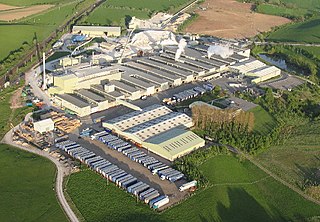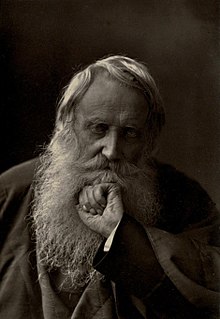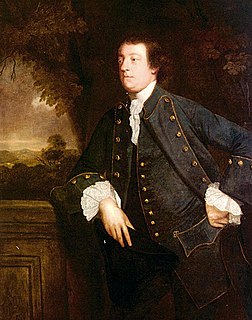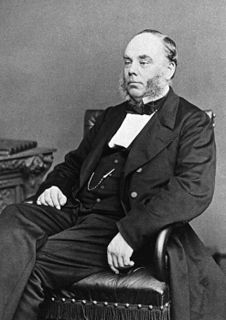John Robinson (1727–1802) was an English lawyer, politician and government official.
Contents

John Robinson (1727–1802) was an English lawyer, politician and government official.

Born on 15 July 1727, and baptised at St. Lawrence, Appleby, Westmorland, on 14 August 1727, he was the eldest son of Charles Robinson, an Appleby tradesman, who died on 19 June 1760, in his fifty-eighth year, having married, at Kirkby Thore on 19 May 1726, Hannah, daughter of Richard Deane of Appleby. He was educated until 17 at Appleby grammar school, and was then articled to his aunt's husband, Richard Wordsworth, of Sockbridge in Barton, Westmorland, clerk of the peace for the county, and grandfather of the poet William Wordsworth. He was admitted as attorney, practised law in Appleby, and became town clerk on 1 October 1750; he was mayor in 1761. On 2 February 1759 he entered Gray's Inn. [1]

Appleby-in-Westmorland is a market town and civil parish in the Eden district, in the county of Cumbria, in North West England. It is situated within a loop of the River Eden. In 2011 the parish had a population of 3,048. It is in the historic county of Westmorland, of which it is the traditional county town.

Westmorland is a historic county in north west England. It formed an administrative county between 1889 and 1974, after which the whole county was administered by the new administrative county of Cumbria. In 2013, the Secretary of State for Communities and Local Government, Eric Pickles, formally recognised and acknowledged the continued existence of England's 39 historic counties, including Westmorland.

Kirkby Thore is a small village, civil parish and hill in Cumbria, England at grid reference NY639257. It is close to the Lake District national park and the Cumbrian Pennines. The market town of Appleby-in-Westmorland is about 5 miles away, and the larger town of Penrith is about 8 miles away. It is in the historic county of Westmorland.
Robinson acquired property and local influence, by marriage and inheritance, and Sir James Lowther made him his principal law agent and land steward. He was created a magistrate and deputy-lieutenant of Westmorland in 1762, and through the influence of Lowther was returned as Member of Parliament for Westmorland on 5 January 1764, continuing to represent it until the dissolution in September 1774. [1]
Westmorland was a constituency covering the county of Westmorland in the North of England, which returned Members of Parliament to the House of Commons of the Parliament of the United Kingdom.
In 1765 Robinson rebuilt the White House, Appleby, and entertained Lord North the prime minister there. He was created secretary of the treasury by North on 6 February 1770. [1] A quarrel with Lowther blew up in early 1773, over local patronage; [2] it saw a challenge to a duel, which Robinson turned down. Robinson resigned the post of law agent to the Lowther estates, and was succeeded in it by his first cousin, John Wordsworth, the poet's father. [1]
Robinson held the secretaryship of the treasury until 1782. He found another seat in parliament, the safe government borough of Harwich, which he represented from October 1774 until his death. In 1780 he was also returned for Seaford, but preferred his old constituency. While in office he was the chief ministerial agent in carrying on the business of parliament, and he was the medium of communication between the ministry and its supporters. The whig satires of the day, such as the Rolliad and the Probationary Odes regularly attacked him, as did Junius and Richard Brinsley Sheridan, when attacking bribery: those whom he seduced from the opposition were known as "Robinson's rats". He brought, on 3 July 1777 an action against Henry Sampson Woodfall, printer of the Public Advertiser for libel, in accusing him of sharing in government contracts, and obtained a verdict of forty shillings and costs. [1]

Harwich was a parliamentary constituency represented in the House of Commons of the Parliament of the United Kingdom. Until its abolition for the 2010 general election it elected one Member of Parliament (MP) by the first past the post system of election.
The UK parliamentary constituency of Seaford was a Cinque Port constituency, similar to a parliamentary borough, in Seaford, East Sussex. A rotten borough, prone by size to undue influence by a patron, it was disenfranchised in the Reform Act of 1832. It was notable for having returned three Prime Ministers as its members – Henry Pelham, who represented the town from 1717 to 1722, William Pitt the Elder from 1747 to 1754 and George Canning in 1827 – though only Canning was Prime Minister while representing Seaford.
Junius was the pseudonym of a writer who contributed a series of letters to the Public Advertiser, from 21 January 1769 to 21 January 1772. The signature had been already used, apparently by him, in a letter of 21 November 1768. These and numerous other personal letters were not included in his Letters of Junius collection, published in 1772.
Robinson declined to back the Fox–North Coalition. On his retirement from the post of secretary of the treasury, he came into a pension of £1,000 a year. After their quarrel Robinson offered his estates in Westmorland (including burgage tenures in Appleby) to Lowther, who didn't want them, and sold nearly the whole property for £29,000 to Sackville Tufton, 8th Earl of Thanet, who thus acquired an interest in the parliamentary representation. [1]

Burgage is a medieval land term used in Great Britain and Ireland, well established by the 13th century.
Sackville Tufton, 8th Earl of Thanet (1733–1786) was an English nobleman.
About 1778 Robinson purchased a property in Middlesex from Peter William Baker, [3] Wyke Manor at Syon Hill, Isleworth, between Brentford and Osterley Park. There he modernised what became Wyke House, and added a dining room by Robert Adam (1778–79). [4] The rest of the house was rebuilt shortly afterwards. [5]

Middlesex is an ancient county in southeast England. It is now entirely within the wider urbanised area of London. Its area is now also mostly within the ceremonial county of Greater London, with small sections in other neighbouring ceremonial counties. It was established in the Anglo-Saxon system from the territory of the Middle Saxons, and existed as an official unit until 1965. The historic county includes land stretching north of the River Thames from 17 miles (27 km) west to 3 miles (5 km) east of the City of London with the rivers Colne and Lea and a ridge of hills as the other boundaries. The largely low-lying county, dominated by clay in its north and alluvium on gravel in its south, was the second smallest county by area in 1831.

Isleworth is a small town of Saxon origin sited within the London Borough of Hounslow in west London, England. Historically it lay within Middlesex. It lies immediately east of the town of Hounslow and west of the River Thames and its tributary the River Crane. Isleworth's original area of settlement, alongside the Thames, is known as 'Old Isleworth'. The north-west corner of the town, bordering on Osterley to the north and Lampton to the west, is known as 'Spring Grove'.

Brentford is a town in western Greater London, England, the contested county town of Middlesex and part of the London Borough of Hounslow. It lies at the confluence of the River Brent and the Thames, 8 miles (13 km) west-by-southwest of Charing Cross. It has formed part of Greater London since 1965.
Robinson was created a D.C.L. of Oxford on 9 July 1773; he declined a peerage in 1784, but in December 1787 William Pitt the Younger appointed him surveyor-general of woods and forests. A favourite of George III, he planted at Windsor millions of acorns and 20,000 oak trees. In 1794 he printed a letter to Sir John Sinclair, chairman of the Board of Agriculture, on enclosures. [1]
Robinson had a paralytic stroke in 1782, and he died of apoplexy at Harwich, on 23 December 1802. He was buried at Isleworth on 2 January 1803. [1]
In 1759 Robinson married Mary Crowe, said to have been daughter of Nathaniel Crowe, a wealthy merchant and planter in Barbados, obtaining with her a fortune. He also inherited from his grandfather, John Robinson, alderman of Appleby 1703–46, property in the county, and eighteen burgage tenures, carrying votes for the borough, in Appleby. [1]
His wife died at Wyke House on 8 June 1805, aged 71, and was buried at Isleworth on 5 June. Their only child Mary Robinson was baptised at St. Lawrence Church, Appleby, on 24 March 1759, and married, at Isleworth on 3 October 1781, the Hon. Henry Neville. She died of consumption at Hotwells, Bristol, on 26 October 1796, and was buried in Isleworth churchyard, where a monument was erected to her memory. Her home was at Wyke House, and all her children were born there. [1]
By his will Robinson left legacies to Captain John Wordsworth and Richard Wordsworth of Staple Inn, London. His means were comparatively small. After his death his accounts were called for, and it was some time before they were passed, and the embargo placed by the crown on the transfer of his Isleworth property to George Villiers, 4th Earl of Jersey removed. Robinson was benefactor to Isleworth, Appleby, and Harwich, leaving books to the grammar schools in the last two towns. [1]
Robinson's correspondence and official papers, including many communications from George III, went to the Marquis of Abergavenny at Eridge Castle. The substance of part of them was described in the 10th Report of the Historical Manuscripts Commission. Excerpts from the whole collections were edited by Benjamin Franklin Stevens for the Royal Historical Society. [1]
Wyke House in the 19th century became a school, run by Alexander Jamieson, and then a private lunatic asylum. [6] [7] [8] One of the proprietors was William Birmingham Costello; [9] later physicians there were John Stevenson Bushnan and then Robert Gardiner Hill. [10] [11] Hill parted company with his partner Edmund Sparke Willett in 1860; Willett was listed as proprietor in 1874. [12] [13] It was still in use as a mental hospital in 1958. [5] In 1970 it was being used for mental health rehabilitation, and was Grade II listed. The house was demolished in 1977 or 1978, after an enquiry; where it once stood is now Wyke Close. [6] [14] [15]
![]()
| Parliament of Great Britain | ||
|---|---|---|
| Preceded by Robert Lowther John Upton | Member of Parliament for Westmorland 1764–1774 With: John Upton to 1768 Thomas Fenwick from 1768 | Succeeded by Sir Michael le Fleming, Bt Sir James Lowther |
| Preceded by George Medley The Viscount Gage | Member of Parliament for Seaford 1780 With: John Durand | Succeeded by John Durand Christopher D'Oyly |
| Preceded by Charles Jenkinson Edward Harvey | Member of Parliament for Harwich 1774–1800 With: Edward Harvey to 1778 George Augustus North 1778–1784 Thomas Orde 1784–1796 Richard Hopkins 1796–1799 Henry Dillon-Lee from 1799 Thomas Myers | Succeeded by Parliament of the United Kingdom |
| Parliament of the United Kingdom | ||
| Preceded by Parliament of Great Britain | Member of Parliament for Harwich 1801–1803 With: Henry Dillon-Lee to 1802 Thomas Myers from 1802 | Succeeded by Thomas Myers John Hiley Addington |

William Lowther, 2nd Earl of Lonsdale PC, FRS, styled Viscount Lowther between 1807 and 1844, was a British Tory politician.

Earl of Lonsdale is a title that has been created twice in British history, firstly in the Peerage of Great Britain in 1784, and then in the Peerage of the United Kingdom in 1807, both times for members of the Lowther family.

John Lowther, 1st Viscount Lonsdale, PC,, known as Sir John Lowther, 2nd Baronet, from 1675 to 1696, was an English politician.

Sir Henry Taylor was an English dramatist and poet, official, and well-connected man of letters.

There have been seven baronetcies created for members of the Lowther family, one in the Baronetage of Nova Scotia, two in the Baronetage of England, two in the Baronetage of Great Britain and two in the Baronetage of the United Kingdom. Two of the creations are extant as of 2008.

James Lowther, 1st Earl of Lonsdale was an English country landowner and politician who sat in the House of Commons for 27 years from 1757 to 1784, when he was raised to the Peerage of Great Britain as Earl of Lonsdale.

Lowther Castle is a country house in the historic county of Westmorland, which now forms part of the modern county of Cumbria, England. It has belonged to the Lowther family, latterly the Earls of Lonsdale, since the Middle Ages.
Appleby was a parliamentary constituency in the former county of Westmorland in England. It existed for two separate periods: from 1295 to 1832, and from 1885 to 1918.

Sir William Lowther, 3rd Baronet was an English landowner, of Marske Hall, Yorkshire and Holker Hall. He was the eldest son of Sir Thomas Lowther, 2nd Baronet and Lady Elizabeth Cavendish.

William Lowther, 1st Earl of Lonsdale KG was a British Tory politician and nobleman.
Henry Lowther, 3rd Viscount Lonsdale was an English courtier and landowner.

Sir John Lowther, 2nd Baronet FRS was an English gentleman and landowner at Whitehaven.

Robert Gardiner Hill MD was a British surgeon specialising in the treatment of lunacy. He is normally credited with being the first superintendent of a small asylum to develop a mode of treatment in which reliance on mechanical medical restraint and coercion could be dropped altogether. In practice he reached this situation in 1838.
John Hiley Addington was a British Tory Party politician.

Appleby Grammar School is a mixed secondary school and sixth form in Appleby-in-Westmorland, Cumbria for students aged 11 to 18. Since August 2011, it has been an Academy. Until 9 September 2013, the school was a registered charity.
Richard Lowther was an English lawyer and politician who sat in the House of Commons in 1640.
William Birmingham Costello (1800–1867) was an Irish surgeon, alienist and medical author.
John Stevenson Bushnan (1807–1884) was an English physician and medical writer.
Richard Smith (1707–1776) was an English merchant in the West Indies trade, and director of the East India Company.